Gila Monster Photos: The Sluggish and Scaly Sweethearts of the American Desert
Modern-day monsters
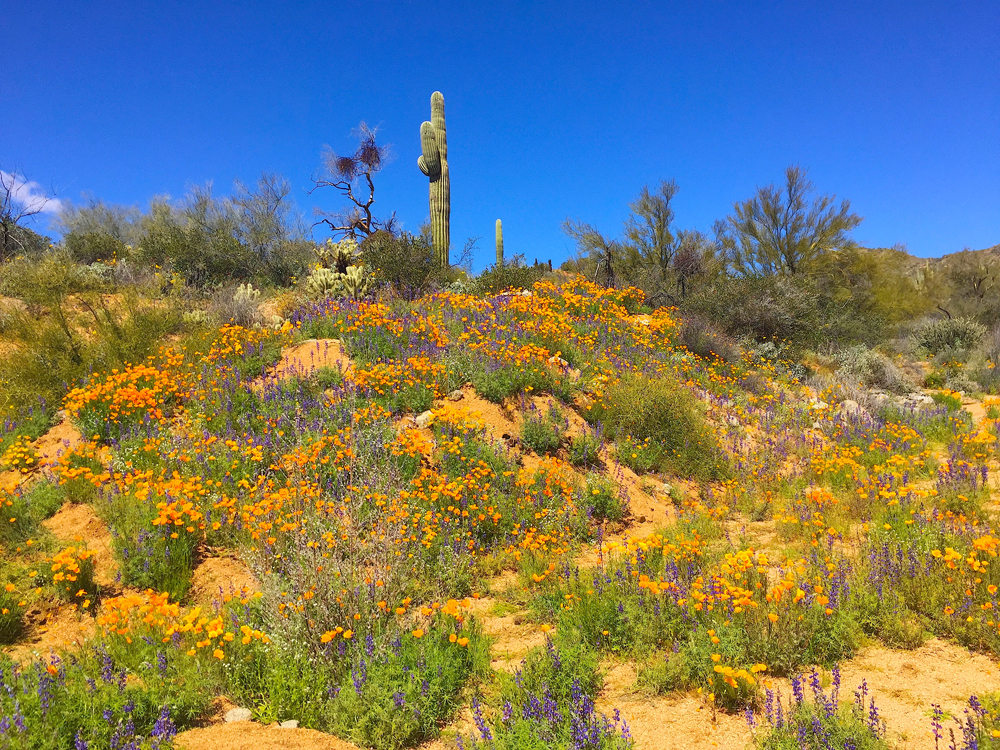
Monsters live in the normally dry, desert landscapes of the Mojave, Sonoran and Chihuahuan Deserts of the southwestern United States and northwestern arid regions of Mexico. They belong to an ancient family of lizards called Helodermatidae which is a class of venomous lizards. Like all modern, scaled reptiles, they are a part of the scientific Order called Squamata, which evolved during the mid-Jurassic period. These modern-day monsters are a major part of the legend, lore and symbols of the American Wild West; and for anyone lucky enough to come across this shy and reclusive monster, known as a Gila Monster, it is an encounter that will be long remembered.
Big and dangerous
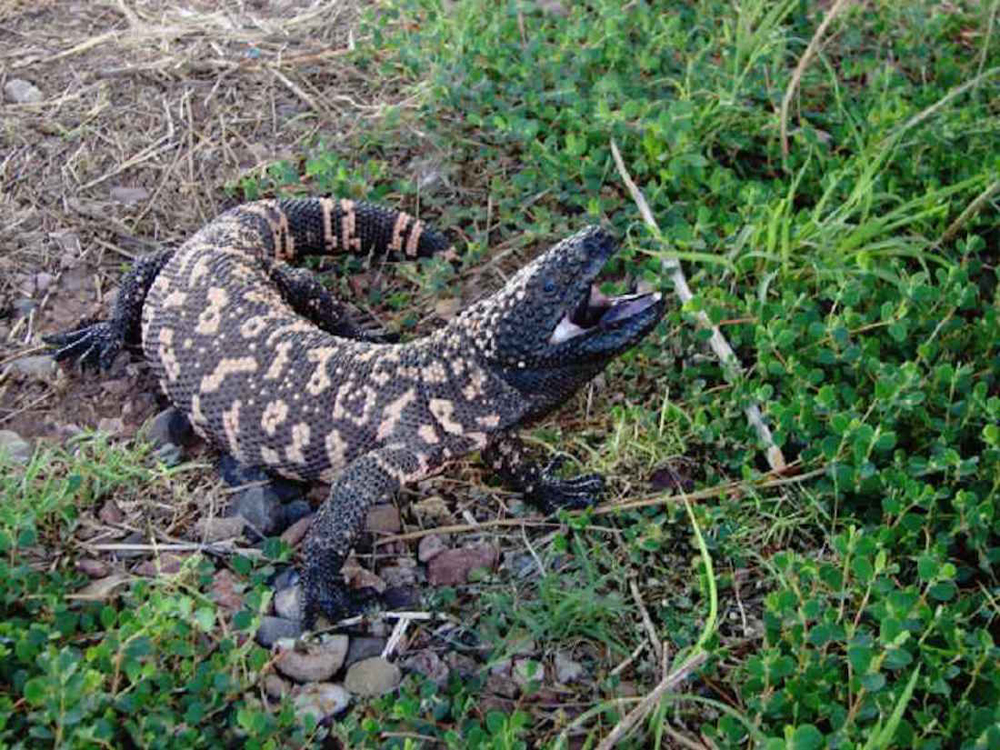
Gila monsters are the largest lizards native to the United States and one of two poisonous lizards found in North America. Some adult males have grown to a length of nearly 24 inches (60 cm) and a weight of 5 pounds (2.3 kg). Gila monsters were first discovered slowly moving through the Arizona Gila River Basin from where they received their common name. The monsters' skin — black with patterns of pink or orange — is covered with osteoderms, bony deposits forming the colorful scales that cover the body from head to the tip of the tail. The two subspecies of Gila monsters have district coloration and banding patterns. The banded Gila monster, Heloderma suspectum cinctum, the northern subspecies, is shown here.
Slow yet hazardous
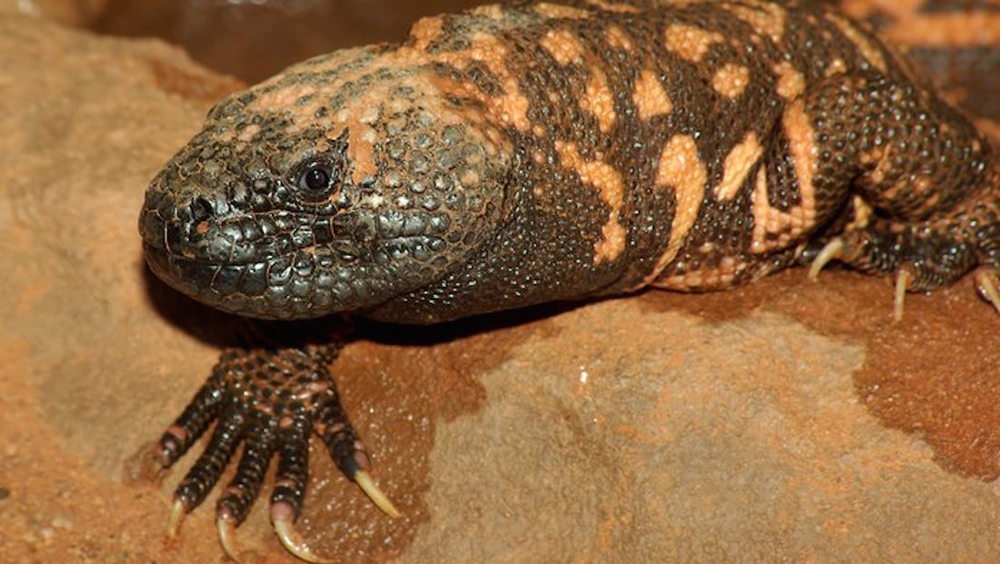
The southern subspecies, known as the reticulated Gila monster, Heloderma suspectum, because of its irregular skin patterns, is shown here. Both subspecies of Gila monsters are sluggish reptiles that seem to prefer a solitary lifestyle in their dry scrubland deserts. Their large, powerful claws allow them to spend about 90 percent of their life secure in an underground burrow or a dugout hollow under a pile of rocks and boulders. By staying underground, the slow-moving Gila monster remains safe from predators as well as the harsh summer heat.
They will often leave their secure burrows shortly after sunrise to bask in the warm morning sunshine. They have a very low metabolic rate, allowing these desert monsters to survive both harsh climates and a scarcity of food.
Reserved reptiles
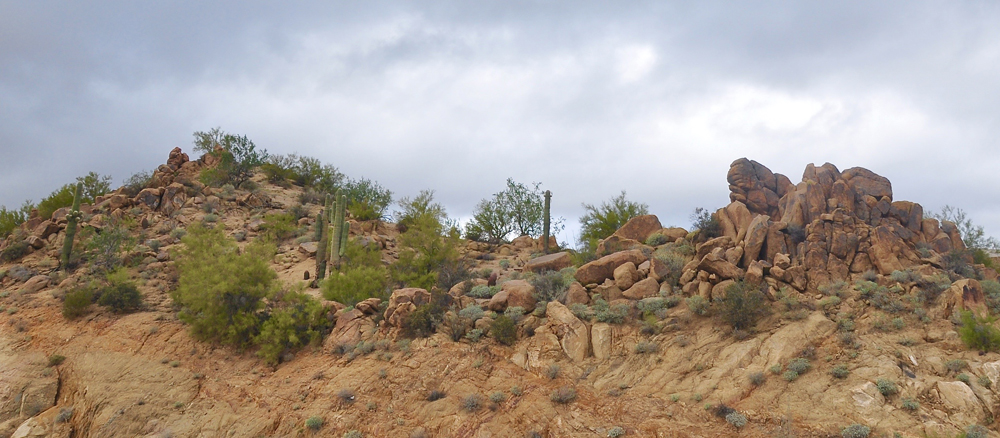
Gila monsters are most commonly found in the washes and arroyos of undisturbed desert regions. They like rocky outcroppings, as the large boulders provide a good place to dig a secure burrow. They avoid both desert lands that have been cultivated for agriculture as well as broad, open flat spaces. They can live at elevations up to 5,000 feet (1,520 meters). Adult Gila monsters create a home range as large as 1 square mile (1.6 square kilometers), which they will vigorously defend.
Private time away

During the start of a late spring mating season, the solitary Gila monsters will begin to cluster together. Males are constantly on the search for females and will battle each other for mating rights. Such combats are not fatal, as the battle entails pushing and shoving until one gives up and lumbers away. The winning male will join his female in an underground burrow where copulation takes place. Some 40 to 45 days after mating, the female will lay a clutch of two to 30 leathery eggs, depending on that season's food availability. Incubation of the eggs lasts nine to 10 months, at which time the eggs are very vulnerable to snake and coyote predation as well as their own mother when her food is scarce.
Tough and tiny
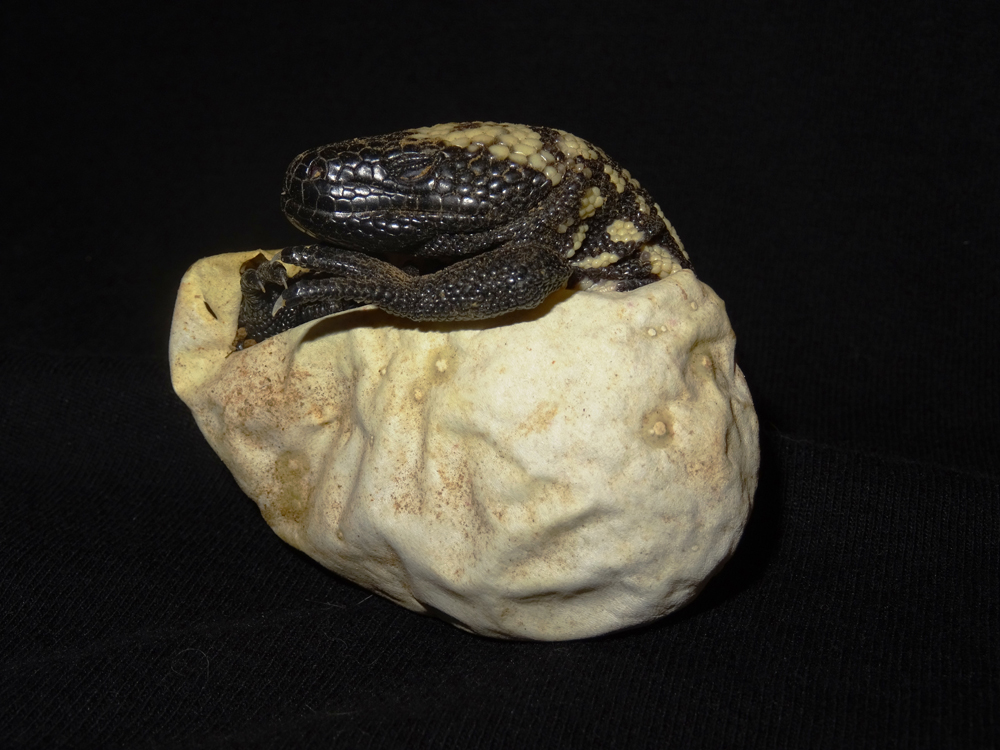
Gila monsters incubate their eggs for 120 to 150 days — one of the longest incubation periods of all reptiles. After spending the winter in their mother's selected burrow, the hatchlings begin to leave their eggs — a process that takes up to four to five days to complete — in late April and June. The remaining egg yolks serve as the first food source for these young hatchlings. The hatchlings are on their own to survive immediately after leaving their egg. They are miniature versions of their parents, just 6 inches (15 cm) in length. Once again, they are very vulnerable to birds, snakes, small mammals and the ever common coyote. Because of all the desert predators, the survival rate for young Gila monsters is thought to be very low. After hatching, the little ones primarily feed on local insects and spiders. As they gain size and weight, they learn to move onto larger prey.
Get the world’s most fascinating discoveries delivered straight to your inbox.
Tongue flicking
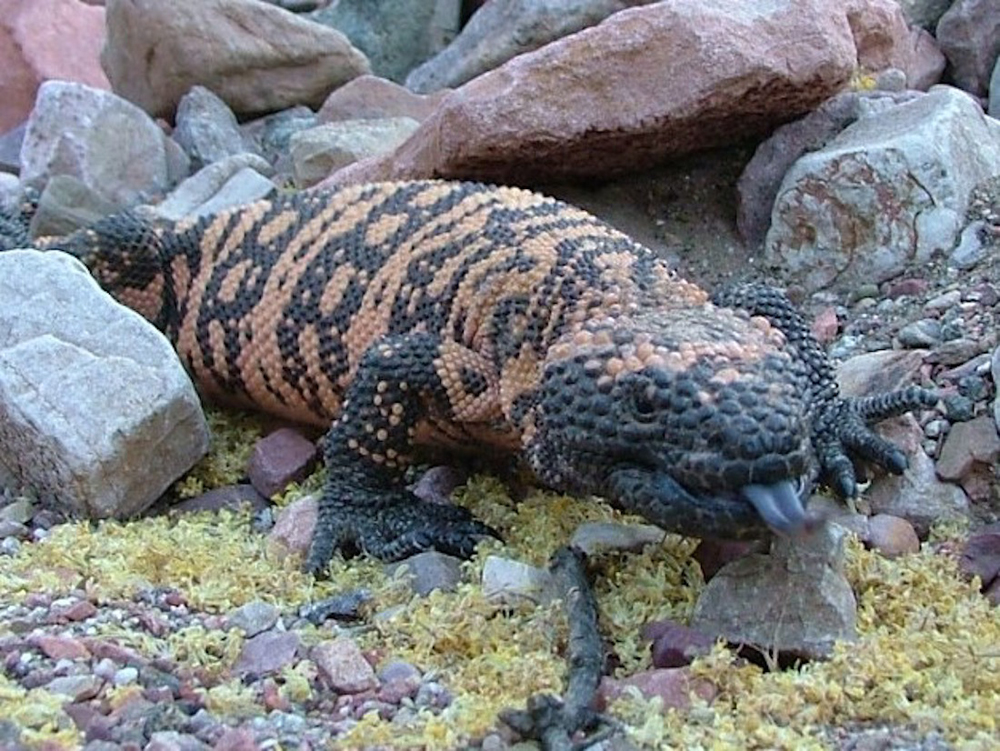
When a Gila monster gets hungry, it will flick its super sensitive forked tongue in and out. The chemical information picked up by the tongue gets transmitted to an organ found in the reptile's mouth called the Jacobson's organ. This organ analyzes the chemical information, allowing the Gila monster to learn potential sources of food without ever leaving the security of its burrow. Gila monsters prey on small mammals, frogs, lizards, rodents, insects, small birds and eggs. They will often follow the scent of a prey animal back to the prey's nest or burrow and attack with its quick, powerful jaws.
When a Gila monster bites, its powerful jaws clamp onto the prey; the grooved teeth in its lower jaws help to push venom (which is made in the lower jaws) into its victim. When a Gila monster is hungry, it will continue to hunt and prey until it has eaten upward of one-third of its body mass.
Family resemblance
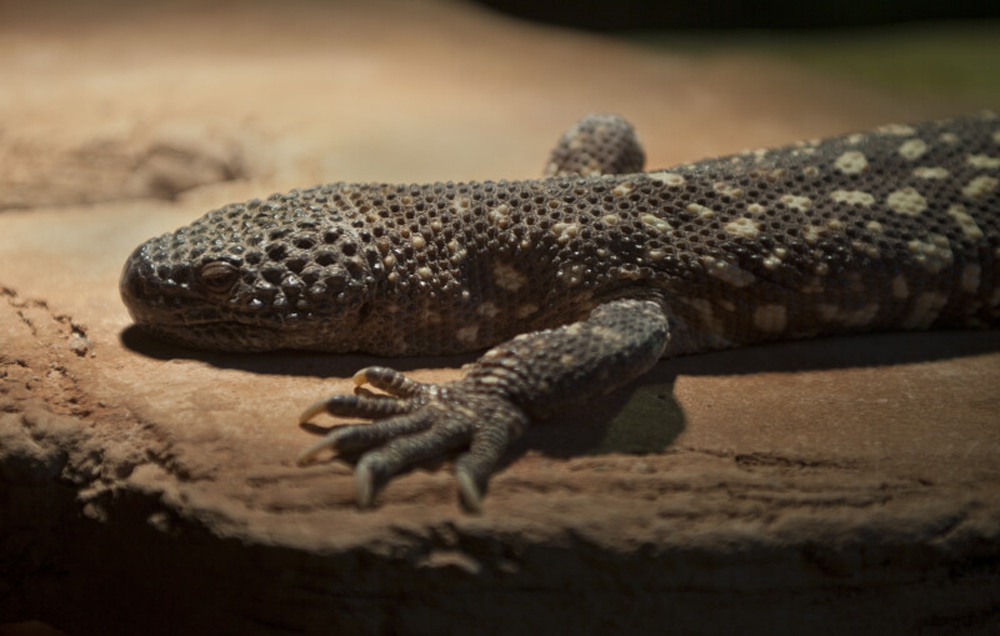
The second species of poisonous lizard found in North America is the Mexican beaded lizard, Heloderma horridum. A close cousin to the Gila monster, the Mexican beaded lizard is also covered with tiny bead-like osteoderms, and this lizard also chews venom into its prey through grooved teeth located in its lower jaw.
These lizards are commonly found in the regions of the Pacific drainage from southern Sonora, Mexico, to southwestern Guatemala and the regions of the Atlantic drainage basin from Central Chiapas, Mexico, to southeastern Guatemala. Their preferred habitat is tropical deciduous forest and thorn scrub forest. Small reptiles and bird eggs make up their primary diet. Mexican beaded lizards are active only from April to mid-November, spending the rest of the year securely tucked away in their underground burrows.
Stuff of myth

Gila monsters hold a special place in the legend and lore of the American West. For the Navajo people, the Gila monster was the first medicine man to walk the Earth in full possession of a wide variety of divining powers. From its first discovery by paleontologist Edward Drinker Cope during his many trips to the American West in the 1870s and 1880s, the shy, slow-moving Gila monster has been an object of wild speculation. After all, it was Cope who gave the lizard the scientific name, Heloderma suspectum, which translates to mean "horrible monster."
Through the years, Gila monsters have been accused of having poisonous breath, lacking an anal gland, which results in its poisonous bite, and once clamping down with its bite, holding on with that bite and not releasing until the monster hears thunders.
Loaded name
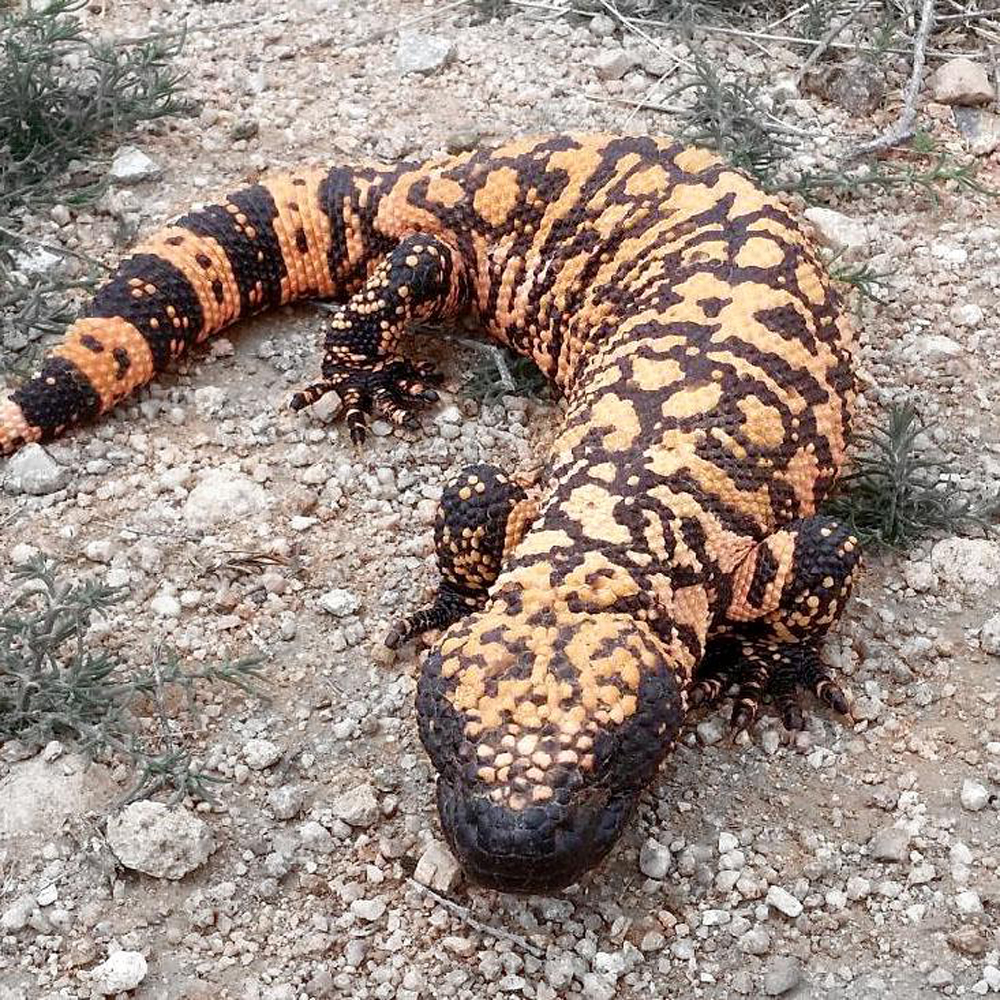
An animal with a name that contains the word "monster" often conjures up feelings of anxiety and fear in humans. Gila monsters were originally thought to have a venom that was fatal to human beings. That fact was first proven untrue by Dr. George Emory Goodfellow in 1891; he had worked in Tombstone, Arizona Territory, beside the likes of the Earp brothers and the Clanton Gang. There, he allowed a Gila monster to bite him to see what would happen. The lizard's bite resulted in Goodfellow being bed-ridden for five days, but he recovered. Of his experience, the doctor wrote, "The belief in the [deadly] poisonous nature of the lizard [is] purely mythical and superstitious, the remnant of primitive man's antagonism to all creepy things."
Sadly, many Gila monsters have and continue to this day to be hunted and killed because of false superstitions and untrue beliefs about this bashful lizard that would rather crawl off and hide than ever stand its ground and fight.
Dangers for predators

The primary threats to Gila monsters today include the loss of their native desert habitat and useless recreational predation. Herpetologists across the Southwest speculate that only a few thousand adult Gila monsters still roam the undeveloped regions of the American deserts. Several breeding programs are ongoing in an attempt to increase the wild Gila monster population. Killing a Gila monster is now illegal in the United States, but in the vast stretch of desert lands across the American Southwest, enforcement of such law is random chance at best.


